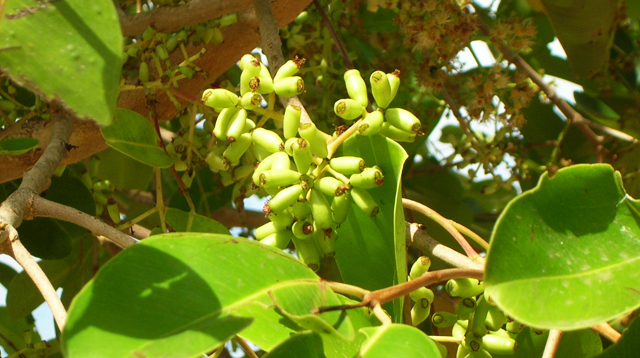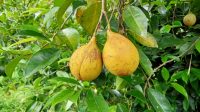SWEET and sour—In the heart of tropical regions, the Java Plum, scientifically known as Syzygium cumini, stands as a testament to nature’s bounty. Balinese people call it juwet, while in Bahasa Indonesia it is known as jambu keling or jamblang. This unassuming fruit, native to the Indian subcontinent, has long been cherished for its multifaceted properties and rich cultural significance. Join us on a journey as we explore the fascinating world of the Java Plum and its myriad functions that extend far beyond its delicious taste.
Botanical Beauty and Varieties
The Java Plum, also known as Jamun or Jambolan, belongs to the Myrtaceae family. It is a tree that typically reaches heights of 30 to 40 feet and produces small, ovoid fruits with a glossy purple-black hue. There are various varieties of Java Plum, each exhibiting slight differences in taste, size, and nutritional composition.
Beyond its delectable flavor, the Java Plum is a nutritional powerhouse. Rich in vitamins A and C, calcium, potassium, and iron, it offers a natural boost to the immune system, aids in maintaining healthy skin, and contributes to overall well-being. Its low-calorie content also makes it a guilt-free addition to any diet.
Blood Sugar Regulation
One of the most remarkable functions of the Java Plum lies in its potential to regulate blood sugar levels. Studies suggest that certain compounds found in the fruit may help lower blood glucose levels, making it a valuable dietary addition for those managing diabetes. The seeds, in particular, contain jambosine, a substance believed to play a role in controlling blood sugar.
Antioxidant Defense
The Java Plum is rich in antioxidants, including anthocyanins, ellagic acid, and tannins. These compounds help neutralize harmful free radicals in the body, protecting cells from oxidative stress. The antioxidant properties contribute to anti-aging effects and may reduce the risk of chronic diseases.
Digestive Health
Java Plum is celebrated for its digestive benefits. The fiber content aids in maintaining a healthy digestive system, preventing constipation, and promoting regular bowel movements. Additionally, the fruit’s natural astringent properties can be beneficial for treating diarrhea.
Traditional Medicine
In traditional medicine systems like Ayurveda, the Java Plum has been used for its therapeutic properties. It is believed to have cooling and diuretic effects, making it valuable for conditions such as urinary disorders and fever. Various parts of the plant, including the bark and leaves, are utilized in herbal remedies.
Culinary Delight
Beyond its health benefits, the Java Plum is a culinary delight. The fruit is consumed fresh, and its tangy-sweet flavor makes it a popular ingredient in jams, jellies, juices, and desserts. In some cultures, the ripe fruit is even fermented to produce beverages like wine and vinegar.
The Java Plum, with its luscious taste and myriad functions, transcends the boundaries of a simple fruit. From its role in traditional medicine to its potential in managing blood sugar levels, this tropical gem continues to captivate both taste buds and scientific curiosity. As we savor the rich flavors of the Java Plum, let us also celebrate its contribution to our health and well-being, embodying nature’s exquisite fusion of taste and functionality. (*)











